Ultimate Guide: How to plant trees on your farm
Planting woodland and trees on farmland has a range of benefits for arable and livestock farmers – as a timber diversification it can provide an extra income stream, it can provide shelter for livestock, reduce soil erosion, provide wood fuel and create a habitat for pollinators and wildlife.
Adding trees and hedges into your existing farm system can help your farm become more resilient and cost effective in the face of current environmental conditions.
Read the guide from the Woodland Trust with advice on where, when and how to plant trees on your farm.
See also: 9 reasons to plant trees on your farmland
See also: Guide to managing an established on-farm woodland
In the guide:
- Choosing your species
Different tree species lend themselves to achieving different goals and objectives. Find out about which trees best suit your planting plans.
- How to plant trees
Find out how to prepare ahead of your planting project to ensure you make the most of the trees you are planting.
This step-by-step module guides you through how to plant a tree to make sure they survive and grow to their full potential.
- Where to plant trees
Planting the right tree in the right place is crucial for you and your farm. Find out more about how to plant in and around your existing farming systems and how planting designs can affect your outcomes.
Choosing your species
Each different tree species offers unique benefits. Selecting which species to plant is important to ensure survival and to make sure that you meet your end goals and objectives.
Look at which native species are growing well nearby and start your planting project with these species. These trees will be well accustomed to the environment and are more likely to succeed.
Soil type
Check your soil type. Most trees can grow in a range of conditions but some have a preference for sandy, clay, wet or chalky soils. Use a spade to dig a hole (about 50cm deep) to see what type of soil you have.
The soil conditions may change across your land and your planting plan should reflect this, as well as any contours. For example, willow and alder like wet areas and aspen and birch can cope on exposed sites.
Pick saplings which are one to two years old. These will require the least immediate maintenance and will start to offer canopy cover within a few years.
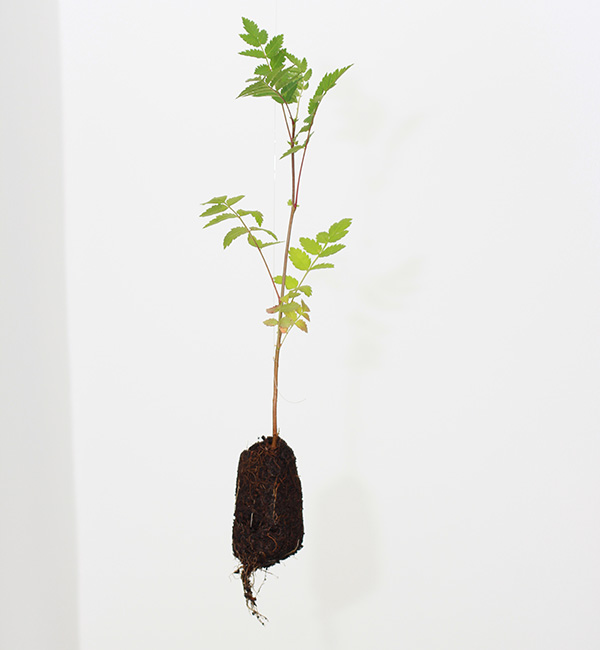
Depending on your objectives, you can choose different tree species to help you meet these goals:
If you want to plant to encourage wildlife, trees with nuts and berries such as rowan, hazel and beech provide food source for birds and mammals throughout the year. A single mature oak can support more than 500 species.
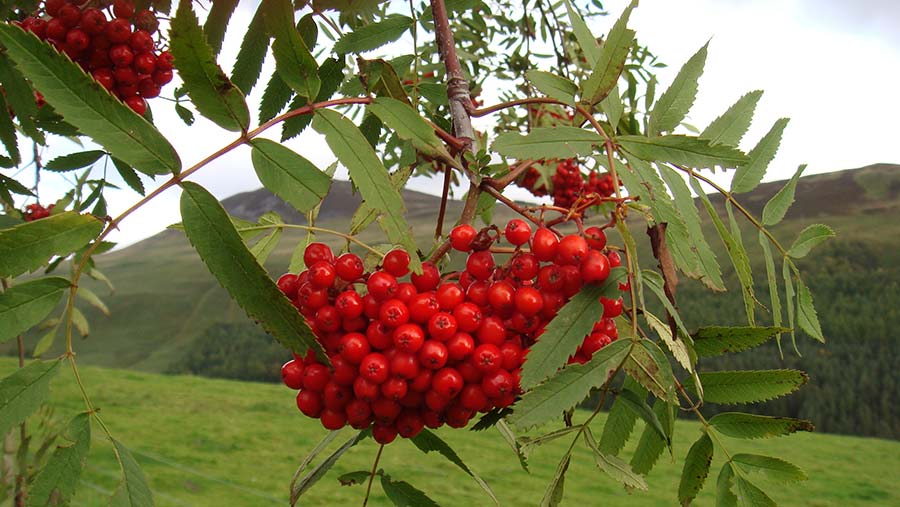
To create firewood, trees like wild cherry, hornbeam, birch and rowan plus fruit trees will all burn well. You can harvest wood fuel from existing trees which have been planted for other reasons.
If you are creating new woodland for fuel production then choose to plant on areas which are difficult to farm.
To enjoy the colours of autumn, spindle, dogwood, guelder rose and field maple will provide a riot of colour for you to enjoy.
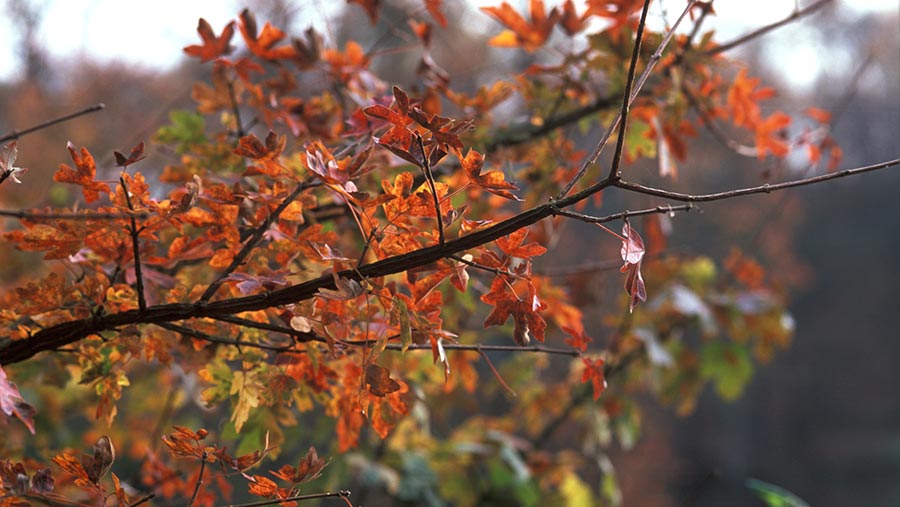
To provide habitats for game birds, choose shrubby species such as hawthorn, hazel, elder, and wild rose – some of which will need to be managed by coppicing to keep short and dense.
The best native timber species include oak (an excellent construction material), beech and walnut.
Deep rooting trees, such as oak, improve soil stability.
They can also promote soil structure by reducing surface water run off with organic matter derived from the leaf litter and root debris.
Always plant native tree species that are UK sourced and grown. This helps to limit the risk of tree disease spreading across the UK from imported plant material.
How to plant trees
It’s important to make sure you plant at the right time of year; trees planted when it’s too warm will be much less likely to survive.
The best time to plant trees is between November and March when the trees are dormant. Avoid planting on a frosty day.
Prepare the ground where you want to plant by breaking up densely compacted soil.
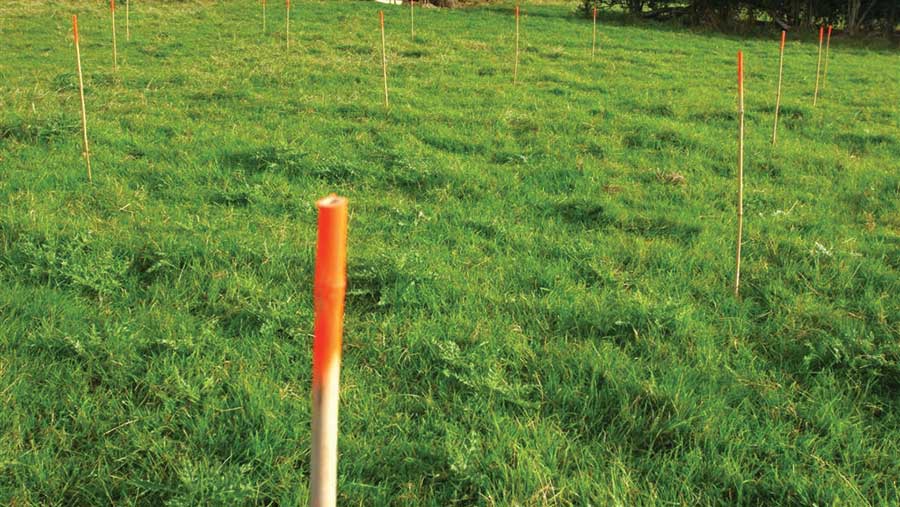
Decide your spacing and mark out planting positions for your trees using the protective canes provided or spraying the ground.
To provide reasonably rapid canopy closure, place your trees between 2 and 2.5 metres apart. If you are planting a hedge, place your trees in a staggered double row approximately 50cm apart, with each row 45cm away from the other.
When moving around your farm, keep the trees in the packaging and transport them in a bucket.
Make sure the roots don’t dry out in the wind. Some sites may require “topping” if overgrown with tall weeds. This involves cutting everything down to a certain height to make planting easier.
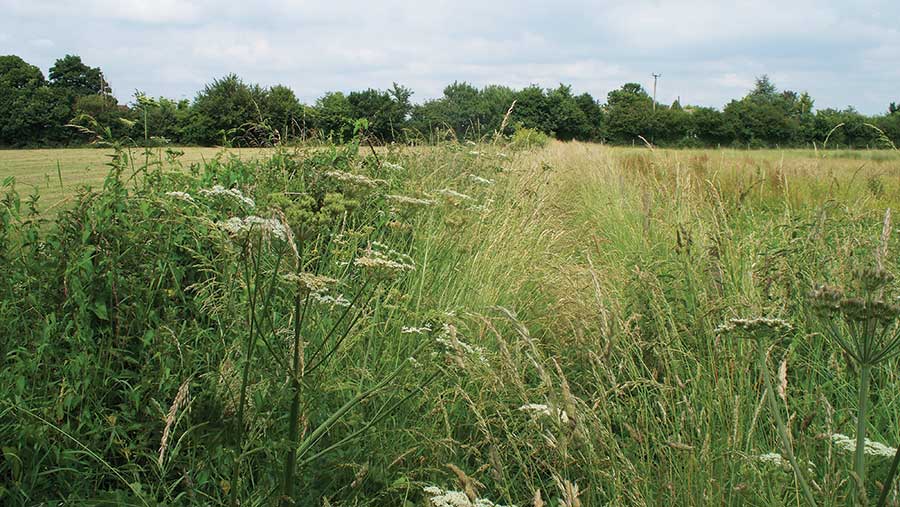
There are many different ways to plant a tree, either as part of a shelterbelt, hedgerow or copse. Below is a step-by-step guide to pit planting.
1. Use a small spade and take cut of turf out of the ground, turn it over and split it almost in half. This pit needs to be several centimetres wider and deeper than the trees roots.
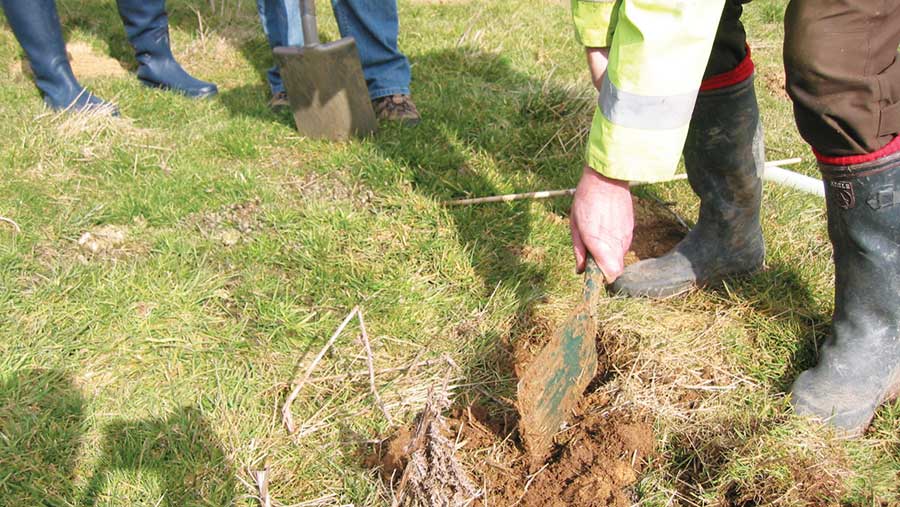
2. Dig the rest of the hole and “free up” the soil in the foot of the hole.
3. Hold the young tree in the hole, roots first, push back the soil and gently press it down onto the roots.
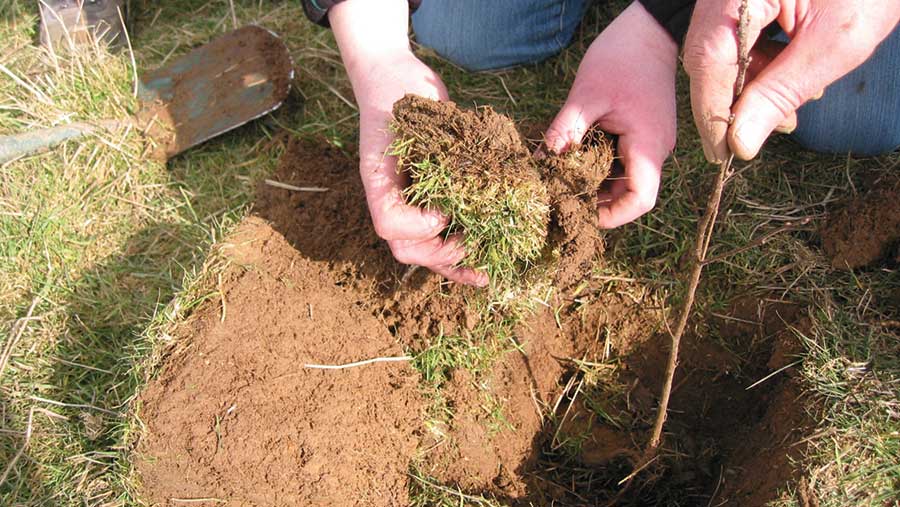
4. Look for the “collar” on the sapling – this is the point where the tree has grown above ground. Place this level to the top of the soil.
5. Put the turf back into the hole with the split either side of the young tree and stamp the ground with your foot to firm it in.
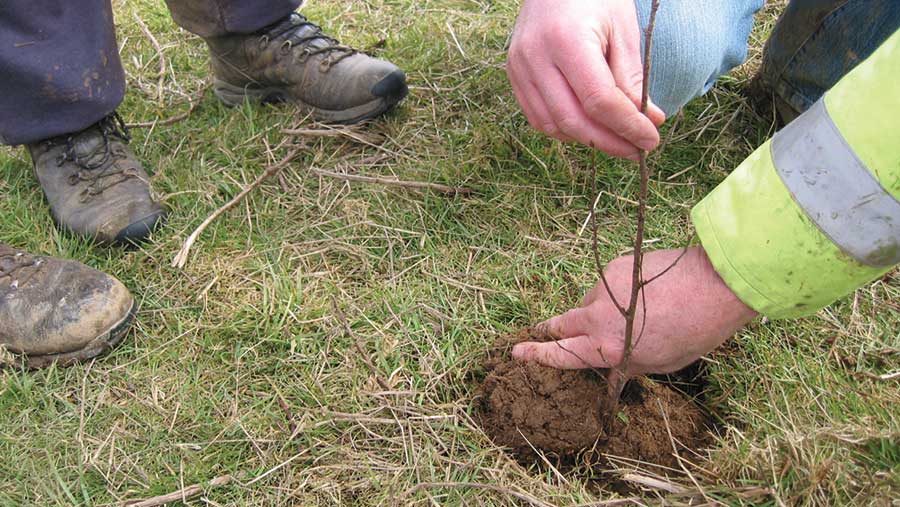
6. Put the turf back into the hole with the split either side of the young tree and stamp the ground with your foot to firm it in.
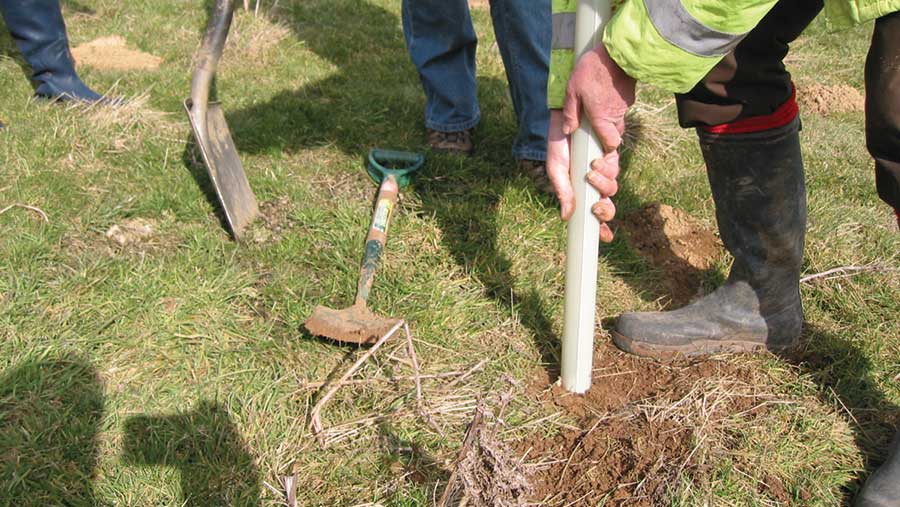
7. Keep the base of your newly planted trees weed free to make sure that their immature root systems can access as much water as possible.
8. Leave a ring, like a polo mint, of vegetation approximately 10cm wide directly adjacent to the base of the tree. This can help protect the roots from scratching by hens.
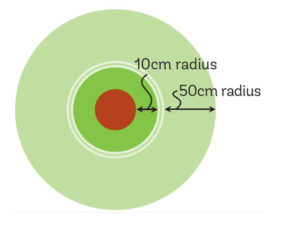
Where to plant trees
Planting the right trees in the right place is crucial in making them work for you and your farm.
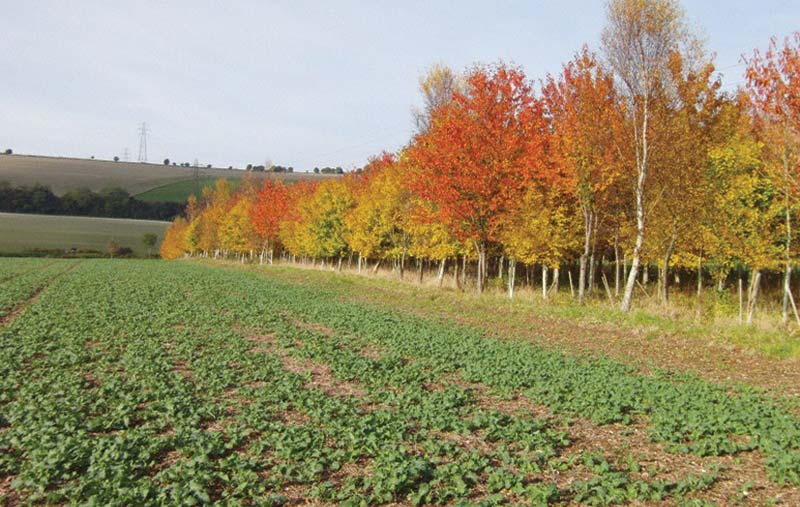
Check for any restrictions to the land that could stop you planting; for example, there could be pipes and equipment underground or important archaeological features.
Your Local Authority can carry out the appropriate checks. Where significant archaeological features exist you must contact the county archaeologist before planting.
Are there any wildflowers, diverse grasses or fungi on the site? Trees should not be planted on land of high ecological value.
Is there a watercourse nearby, or is your planting area on a floodplain? If so you will need to contact the Environment Agency prior to planting.
If you have neighbours living close to the planting area, please consider any potential negative impacts of your trees on their views, access or light levels.
Planting to provide shade and shelter for livestock
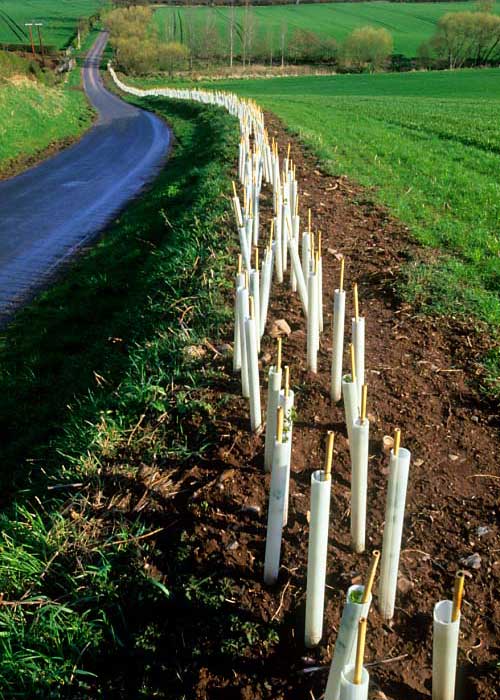
Sheltered, well drained fields provide the best physical conditions for livestock and are shown to reduce mortality of young lambs on sheep farms and lower exposure to diseases.
The greatest shelter benefits can come from belts of trees or hedgerows.
Restoring and maintaining existing hedgerows on your farm, to create robust shelter, is a good place to start. Planting more hedgerows to divide fields can also offer additional shelter.
Shelter belts can be integrated into your farm with adjacent planting next to existing hedges – plant on the northern, shadier side to avoid shading out the hedge.
Planting to improve soil management and prevent soil erosion
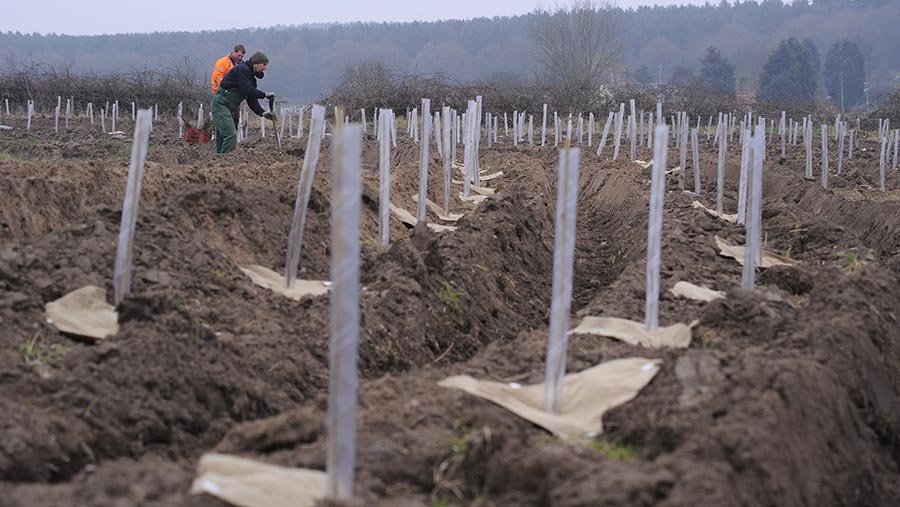
Soil erosion is a significant economic cost to agriculture. Plant tree belts along the contours of your farm, perpendicular to prevailing winds or in areas known to be vulnerable to soil erosion.
This will build natural barriers to protect soil and crops from the impact of rainfall and strong winds, and limit erosion.
Planting to improve water management
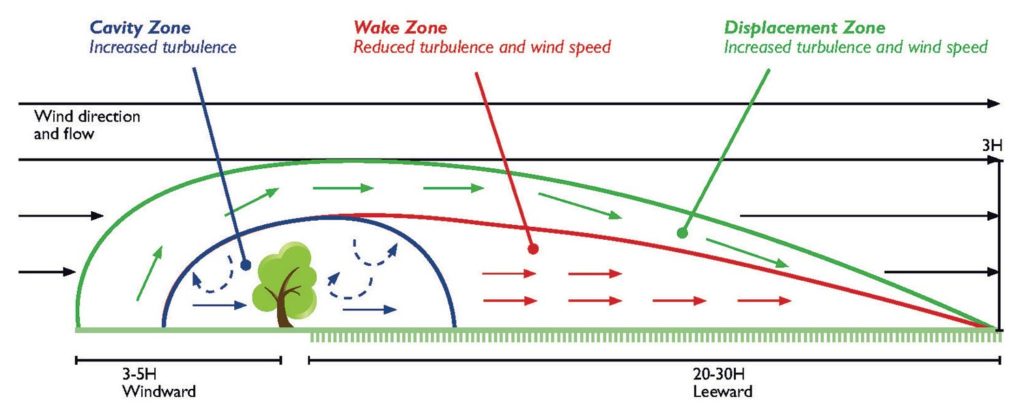
Trees help improve water management on your farm, including improving water quality and crop water efficiency and slowing water flow.
Plant trees on your field edge or as an in-field shelter belt to reduce wind speeds across the farm.
This modifies the crop microclimate and reduces evapotranspiration losses.
Provision of habitat for pollinators and insects
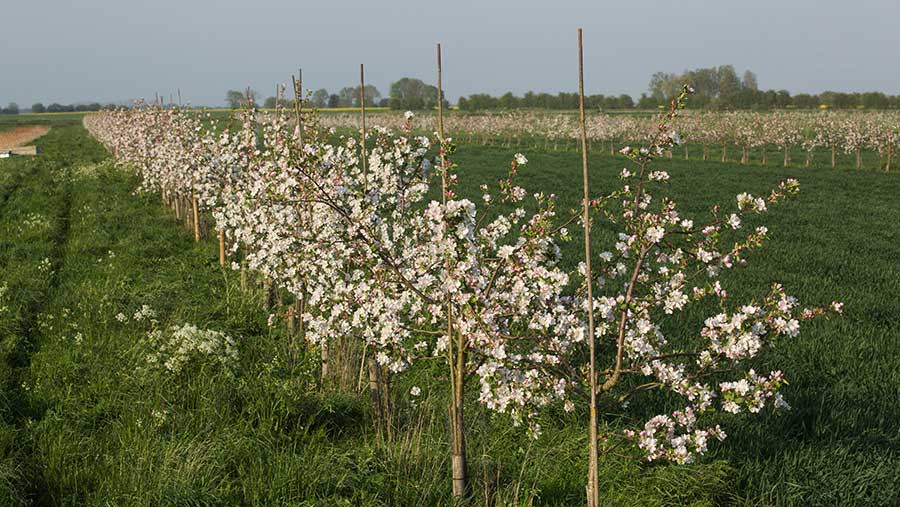
Trees provide important nesting sites and food sources for pollinators. They create “highways” for bees, hoverflies and other insects to move between habitats. Plant regularly spaced trees as part of alley-cropping systems to create these pathways.
Silvoarable schemes
Silvoarable agroforestry systems give an opportunity to increase productivity per hectare and will also create a more resilient farming system.
Introduce productive tree species such as apple trees in rows to increase the area farmed both above and below ground.
More information
The Woodland Trust offers free advice and support for tree and hedgerow planting on your farm. This includes choosing species, identifying where to plant and assisting with grant support where available.
For more information and expert advice on how to plant trees on your farm, visit woodlandtrust.org.uk/plant or email plant@woodlandtrust.org.uk
